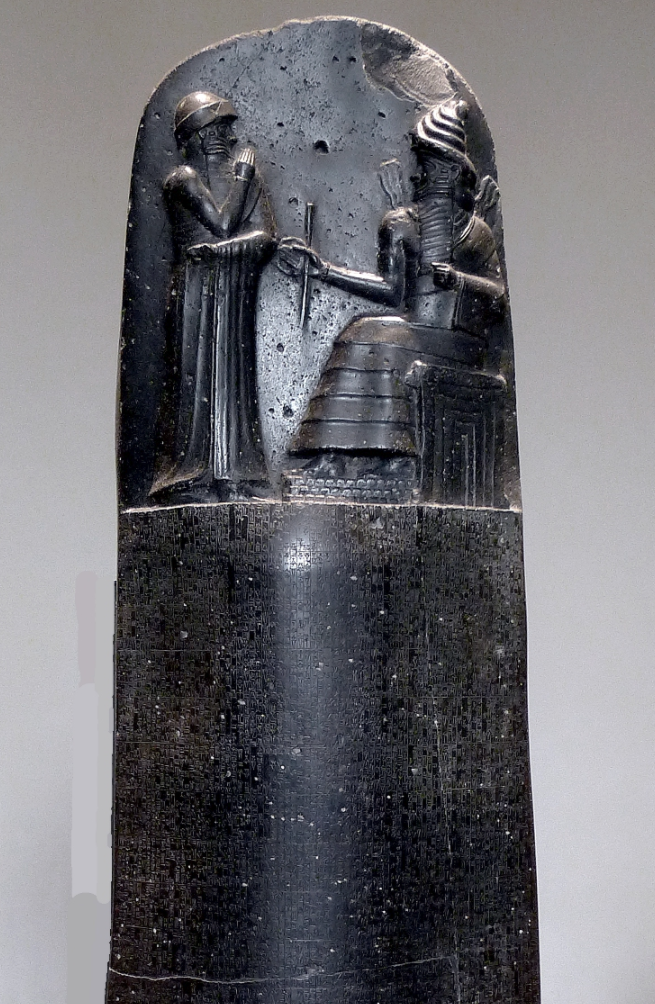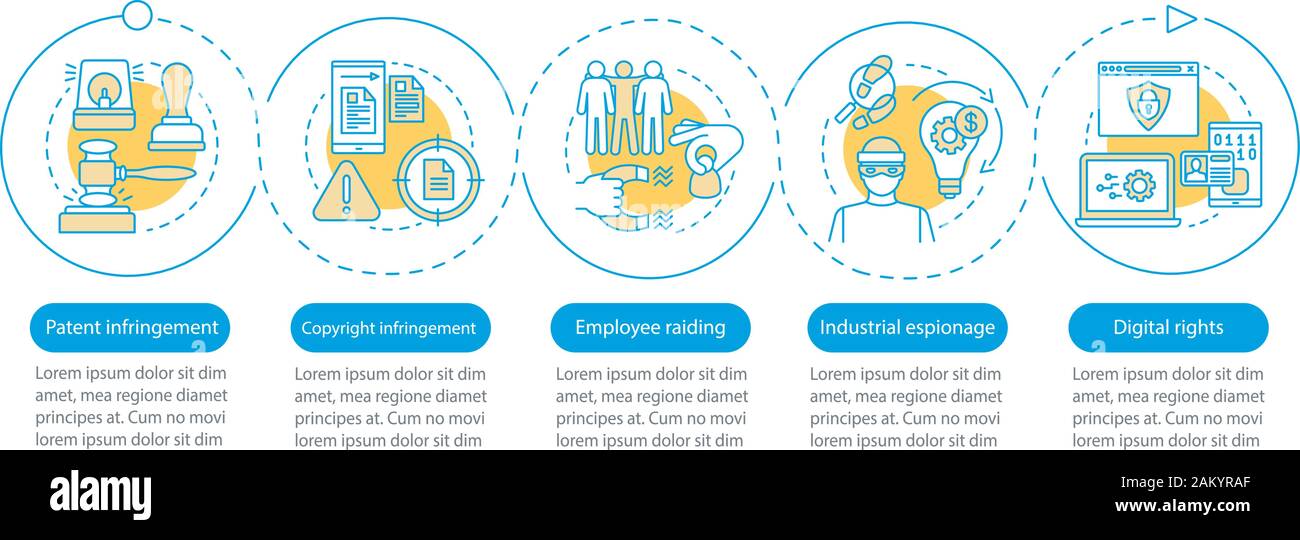Visualizing the Evolution of Law: From Ancient Codes to Modern Systems
A journey through time exploring how legal frameworks have shaped civilization
The history of law represents one of humanity's most profound intellectual journeys—from primitive tribal customs to sophisticated international legal frameworks. This visual exploration traces how legal systems emerged, evolved, and spread across civilizations, shaping human societies and reflecting their values.
Throughout history, legal frameworks have served as mirrors reflecting the social, economic, and political realities of their time. By visualizing this evolution, we gain insights not only into how laws have changed but why these transformations occurred and what they reveal about human civilization.

Legal history is more than a chronology of statutes and court decisions—it's the story of how societies have organized themselves, resolved conflicts, distributed power, and codified their values. Through visualizing this journey, we can better understand the foundations of contemporary legal systems and appreciate how they continue to evolve.
The Origins of Legal Frameworks: Earliest Foundations
Human societies have always needed mechanisms to resolve disputes and establish order. The earliest legal frameworks emerged from tribal customs and oral traditions before evolving into formal written codes—a transformational step in human governance.
Evolution of Early Legal Systems
flowchart TB
A[Tribal Customs
10,000-5000 BCE] --> B[Oral Traditions
5000-3000 BCE]
B --> C[First Written Laws
Mesopotamia 2100-1750 BCE]
C --> D[Code of Hammurabi
1754 BCE]
D --> E[Egyptian Law
1500 BCE]
C --> F[Hittite Laws
1650-1500 BCE]
style D fill:#FF8000,stroke:#D66700,color:white
style A fill:#F0F0F0,stroke:#D0D0D0
style B fill:#F0F0F0,stroke:#D0D0D0
style C fill:#F0F0F0,stroke:#D0D0D0
style E fill:#F0F0F0,stroke:#D0D0D0
style F fill:#F0F0F0,stroke:#D0D0D0
The Code of Hammurabi
The Code of Hammurabi, created around 1754 BCE in ancient Babylon, represents one of humanity's earliest comprehensive legal texts. Inscribed on a 7-foot basalt stele, this code contained 282 laws covering everything from property rights to personal injury and family law.

Key Principles of Hammurabi's Code
- Retributive justice principle ("an eye for an eye")
- Different punishments based on social class
- Presumption of innocence until proven guilty
- Written evidence required for certain contracts
- Protection for certain rights of women and children
The transition from oral traditions to written legal codes marked a pivotal shift in how societies managed justice. Written laws reduced arbitrary judgments, provided consistency across cases, and created historical precedent—all foundational concepts for modern legal systems.
Visualizing this evolution helps us understand how early societies formalized their values and power structures. Using historical research topics as the foundation for legal analysis, we can see how these ancient texts laid groundwork for concepts like due process and equality before the law that would evolve over millennia.
Ancient Legal Systems That Shaped Our World
Several ancient civilizations developed sophisticated legal systems that continue to influence modern jurisprudence. Roman law, Greek legal philosophy, and Confucian principles in China each contributed distinct approaches to justice and governance that echo through contemporary legal frameworks.
Influence of Ancient Legal Systems on Modern Law
The chart below illustrates the relative influence of various ancient legal systems on modern jurisprudence:
The Roman Legal Legacy
Roman law, particularly through the Justinian Code (Corpus Juris Civilis), forms the backbone of civil law systems used throughout much of Europe, Latin America, and parts of Africa. The Romans systematized legal principles with remarkable sophistication, creating concepts that remain relevant today.
The Structure of Roman Law
flowchart TD
A[Roman Law] --> B[Jus Civile
Civil Law for Citizens]
A --> C[Jus Gentium
Law of Nations]
A --> D[Jus Naturale
Natural Law]
B --> E[Twelve Tables
450 BCE]
C --> F[Applied to Non-Citizens
& Foreign Relations]
D --> G[Universal Principles
Based on Nature]
style A fill:#FF8000,stroke:#D66700,color:white
style B fill:#F0F0F0,stroke:#D0D0D0
style C fill:#F0F0F0,stroke:#D0D0D0
style D fill:#F0F0F0,stroke:#D0D0D0
style E fill:#F0F0F0,stroke:#D0D0D0
style F fill:#F0F0F0,stroke:#D0D0D0
style G fill:#F0F0F0,stroke:#D0D0D0
Key Roman Legal Innovations
- Distinction between public and private law
- Concepts of legal personhood and legal standing
- Sophisticated contract and property law principles
- Systematic codification of laws and legal precedents
- Professional class of legal experts (jurisconsults)
The Twelve Tables, Rome's first written legal code (450 BCE), established the principle that law should be clearly articulated and accessible to all citizens—a revolutionary concept that laid groundwork for legal transparency.
Ancient Greek Legal Systems
While Roman law provided structural elements for modern legal systems, Greek legal thought contributed philosophical foundations. In Athens, citizens directly participated in the legal process—serving as jurors, bringing forward cases, and defending themselves without professional representation.

As noted by scholars of AI legal assistants, Greek legal systems emphasized direct citizen participation rather than professional legal representation—a stark contrast to today's specialized legal profession.
Confucian Legal Philosophy in China
In ancient China, Confucian philosophy shaped a legal approach that prioritized virtue and moral education over rigid codification. This system emphasized maintaining social harmony through ritual propriety (li) rather than strictly enforced laws (fa).
The stark differences between these systems—Roman codification, Greek participation, and Confucian virtue-centrism—demonstrate how cultural values fundamentally shape approaches to justice and social order. Each of these ancient systems contributed unique elements to the global legal mosaic we see today.
The Evolution of Legal Documentation and Communication
The methods used to record, preserve, and communicate law have profoundly influenced legal development. From stone carvings to digital databases, documentation technology has shaped how legal knowledge is created, stored, and accessed.
Evolution of Legal Documentation Technology
timeline
title Evolution of Legal Documentation Media
section Ancient Era
Stone Tablets : 3000-500 BCE
Clay Tablets : 3000-500 BCE
Papyrus Scrolls : 3000 BCE-500 CE
section Medieval
Parchment Codices : 200-1500 CE
Manuscript Books : 500-1450 CE
section Early Modern
Printed Books : 1450-present
Typewritten Documents : 1870s-1980s
section Digital Age
Word Processing : 1980s-present
Digital Databases : 1990s-present
Blockchain Records : 2010s-present
The transition from stone tablets to digital repositories represents more than technological advancement—it fundamentally transformed legal accessibility, preservation, and interpretation.
How Documentation Technology Shaped Law
- Stone/Clay Tablets: Limited space required concise language, emphasizing core principles
- Scrolls/Codices: Increased space allowed for more detailed laws and commentaries
- Printing Press: Democratized legal knowledge beyond elite circles
- Digital Technology: Enabled complex search, analysis, and global access to legal information

The Evolution of Legal Language
Legal language itself evolved alongside documentation technology. Early legal codes were direct and concrete, while later systems developed increasingly abstract and specialized terminology, creating the complex legal language we know today.
Complexity of Legal Language Over Time
Modern visualization tools offer unprecedented opportunities to clarify complex legal concepts. Through intuitive diagrams and interactive timelines, PageOn.ai's Vibe Creation transforms abstract legal principles into engaging visual narratives—making the evolution of legal documentation accessible to everyone from law students to the general public.
Pivotal Moments in Legal History
Throughout history, certain watershed documents and events fundamentally reshaped legal traditions. These pivotal moments often reflected broader social and political changes, codifying new relationships between rulers and the ruled.
Watershed Documents in Legal History
gantt
title Timeline of Pivotal Legal Documents
dateFormat YYYY
axisFormat %Y
section Ancient Period
Code of Hammurabi : 1754, 10
Law of the Twelve Tables : -450, 10
section Classical Period
Corpus Juris Civilis (Justinian Code) : 529, 35
section Medieval Period
Magna Carta : 1215, 10
section Early Modern
Constitution of San Marino : 1600, 10
English Bill of Rights : 1689, 10
section Modern Period
US Constitution : 1787, 10
Napoleonic Code : 1804, 10
Universal Declaration of Human Rights : 1948, 10
The Magna Carta: Limiting Royal Power
The Magna Carta (1215) represented a revolutionary constraint on monarchical power in England. Though initially created to address baronial grievances against King John, it established foundational principles about the limitation of sovereign power that would echo through centuries of legal development.

Key Principles from the Magna Carta
- No taxation without representation
- Right to due process and trial by peers
- Protection against arbitrary imprisonment
- Access to swift justice without delay
- Constraint of royal power by written agreement
The Justinian Code: Preserving Roman Legal Wisdom
The Corpus Juris Civilis (529-534 CE), commissioned by Byzantine Emperor Justinian I, represented an enormous achievement in legal systematization. This comprehensive compilation preserved centuries of Roman legal development that might otherwise have been lost after the empire's fall.
The Justinian Code's four main components—the Code (Codex), Digest (Digesta), Institutes (Institutiones), and Novels (Novellae Constitutiones)—created a coherent framework that would later influence everything from European civil law to modern concepts of legal education.
Development of Common Law in England
The English common law tradition, developing from the 12th century onward, established the revolutionary concept that law evolves through judicial decisions that set binding precedents. This judge-made law, recorded in case reports, created predictability while maintaining flexibility to address new situations.
These pivotal moments established enduring legal principles that transcended their original contexts. By creating striking visual timelines with PageOn.ai's structural visualization tools, we can clearly trace how these watershed documents influenced subsequent legal developments across centuries and continents.
Law Across Diverse Cultures: A Comparative Visual Analysis
Legal traditions developed along distinct paths across different civilizations, reflecting diverse approaches to justice, conflict resolution, and societal organization. A comparative analysis reveals how cultural values fundamentally shape legal frameworks.
Comparing Major Legal Traditions
Islamic Legal Traditions
Islamic law (Sharia) represents one of history's most sophisticated and comprehensive legal frameworks, developing from the 7th century CE. Unlike secular Western systems, Sharia derives from religious sources—primarily the Quran and Sunnah (teachings and practices of Prophet Muhammad).
Sources of Islamic Law
flowchart TD
A[Islamic Law
Sources] --> B[Primary Sources]
A --> C[Secondary Sources]
B --> D[Quran]
B --> E[Sunnah]
C --> F[Ijma
Scholarly Consensus]
C --> G[Qiyas
Analogical Reasoning]
style A fill:#FF8000,stroke:#D66700,color:white
style B fill:#F0F0F0,stroke:#D0D0D0
style C fill:#F0F0F0,stroke:#D0D0D0
style D fill:#F0F0F0,stroke:#D0D0D0
style E fill:#F0F0F0,stroke:#D0D0D0
style F fill:#F0F0F0,stroke:#D0D0D0
style G fill:#F0F0F0,stroke:#D0D0D0
Islamic legal scholarship produced sophisticated interpretive traditions (fiqh) across different schools of thought. These varied approaches to legal interpretation allowed Sharia to adapt to diverse cultural contexts while maintaining core principles.
Indigenous and Customary Legal Systems
Indigenous legal traditions often emphasize restorative rather than retributive justice, focusing on healing community relationships rather than punishment. Many such systems feature symbols and meanings that communicate legal concepts through cultural practices rather than written codes.

Colonial legal impositions often marginalized these sophisticated indigenous systems, creating complex legal pluralism where multiple traditions operate in parallel. Indigenous legal revitalization movements now seek to reclaim and reintegrate these approaches.
Distinctive Features of Indigenous Legal Systems
- Emphasis on relationships rather than abstract rights
- Focus on restoring harmony rather than punishment
- Integration with spiritual and cultural practices
- Collective rather than individual-centered approaches
- Oral transmission through stories, ceremonies, and traditions
By creating side-by-side visual comparisons using PageOn.ai's layout capabilities, we can better understand how different legal traditions approach similar challenges through distinct cultural lenses—revealing both the universal aspects of legal development and the remarkable diversity of human approaches to justice.
The Democratization of Legal Knowledge
Throughout most of history, legal knowledge remained the exclusive domain of elites—whether religious authorities, nobles, or specialized professionals. The democratization of legal knowledge represents a profound shift in who can access, understand, and participate in legal systems.
Legal Knowledge Accessibility Timeline
Technological Catalysts for Legal Democratization
| Technology | Time Period | Impact on Legal Access |
|---|---|---|
| Printing Press | 15th century onward | Enabled widespread distribution of legal codes, commentaries, and court decisions beyond elite circles |
| Public Libraries | 18th-19th centuries | Created public access points for legal materials previously inaccessible to common citizens |
| Standardized Legal Education | 19th-20th centuries | Formalized pathways to legal expertise beyond apprenticeship or inheritance |
| Internet & Digital Databases | Late 20th century | Created unprecedented access to legal information outside formal institutions |
| AI & Visual Tools | 21st century | Making complex legal concepts accessible through visualization, translation, and simplification |
Visual Representation of Law
Visual representation has played a crucial role in making law more accessible to non-experts. From early symbolic representations (scales of justice, judicial regalia) to modern infographics and interactive tools, visual elements help bridge the gap between legal complexity and public understanding.

Modern tools have revolutionized legal accessibility, with visualization playing a particularly important role. When preparing materials about legal history, utilizing appropriate thesis defense presentation techniques can help communicate complex legal concepts clearly.
Today's technological tools continue this democratization process. PageOn.ai transforms abstract legal concepts into clear visual explanations—helping students, professionals, and the public understand complex legal histories and principles that were once accessible only to specialists.
Law in the Modern Age: Visual Representation of Contemporary Developments
The legal landscape has undergone dramatic transformations in recent decades. New fields have emerged to address novel challenges, while visualization tools have become essential for navigating increasingly complex global legal frameworks.
Emerging Fields in Modern Law
mindmap root((Modern Legal
Specializations)) International Law Human Rights Law Humanitarian Law Trade Law Maritime Law Technology Law Data Privacy Cybersecurity AI Regulation Intellectual Property Environmental Law Climate Change Law Conservation Law Environmental Justice Space Law Satellite Regulation Extraterrestrial Resource Rights Space Traffic Management
The Emergence of International Law
International law has evolved from basic inter-state agreements to a complex system governing global challenges. Modern international legal frameworks address everything from human rights and environmental protection to trade relationships and cultural heritage.
Key Developments in International Law
- Emergence of international courts and tribunals
- Creation of the United Nations legal framework
- Development of human rights as universal legal principles
- Evolution of international humanitarian law
- Establishment of multilateral environmental agreements

Specialized Legal Fields: Responding to New Challenges
The acceleration of technological development and global challenges has spawned entirely new legal disciplines that would have been unimaginable a century ago:
Evolution of Technological Law Fields
timeline
title Timeline of Technological Law Development
section Early Computing Era
Computer Crime Laws : 1970s
Software Copyright : 1980s
section Internet Era
Domain Name Regulation : 1990s
E-Commerce Regulation : Late 1990s
Personal Data Protection : Early 2000s
section Digital Society
Social Media Law : 2010s
Cryptocurrency Regulation : Mid 2010s
AI Governance : Late 2010s
Algorithmic Accountability : 2020s
The rapid development of technology has created unprecedented legal challenges, requiring innovative approaches to AI ChatGPT prompts for legal writing and other emerging fields. Legal professionals must now navigate complex technological concepts while maintaining traditional legal principles.
Visualization Tools in Modern Legal Practice
As legal frameworks become increasingly complex, visual tools have become essential for legal professionals and the public alike. Visualization helps demonstrate relationships between legal concepts, clarify procedural requirements, and communicate complex regulations to diverse audiences.

PageOn.ai's AI-driven visualization capabilities represent the cutting edge of this trend, helping legal professionals communicate complex developments to clients, students, and colleagues. By transforming abstract legal concepts into intuitive visual representations, these tools democratize legal knowledge while maintaining the precision essential to legal analysis.
Transform Your Legal History Visualizations with PageOn.ai
Create compelling visual timelines, comparison charts, and conceptual diagrams that make complex legal evolution clear and engaging for any audience.
Start Creating with PageOn.ai TodayThe Continuing Evolution of Legal Visualization
The history of law reveals a constant evolution in how societies organize, document, and visualize their legal frameworks. From stone tablets to digital interfaces, each advancement in how we represent law has made legal concepts more accessible while enabling greater complexity.
Today's visualization tools represent the latest stage in this journey—democratizing legal knowledge while providing unprecedented precision in communicating complex legal relationships. As legal systems continue to evolve in response to global challenges, visual tools will play an increasingly vital role in maintaining accessibility, transparency, and understanding.
By leveraging PageOn.ai's advanced visualization capabilities, legal historians, educators, and practitioners can transform complex legal evolution into clear, engaging visual narratives—continuing the millennia-long process of making law more accessible and understandable to all.
You Might Also Like
How to Design Science Lesson Plans That Captivate Students
Create science lesson plans that captivate students with hands-on activities, clear objectives, and real-world applications to foster curiosity and critical thinking.
How to Write a Scientific Review Article Step by Step
Learn how to write a review article in science step by step. Define research questions, synthesize findings, and structure your article for clarity and impact.
How to Write a Self-Performance Review with Practical Examples
Learn how to write a self-performance review with examples and tips. Use an employee performance review work self evaluation sample essay to guide your process.
How to Write a Spec Sheet Like a Pro? [+Templates]
Learn how to create a professional spec sheet with key components, step-by-step guidance, and free templates to ensure clarity and accuracy.
